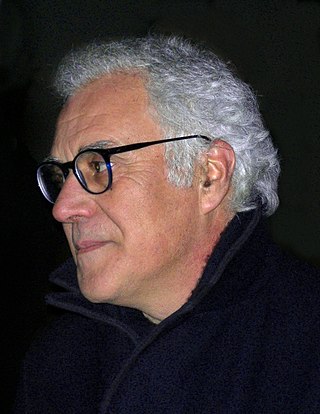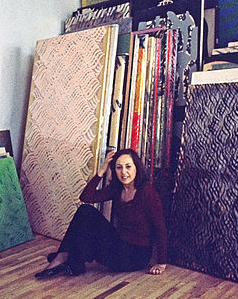
Achille Bonito Oliva is an Italian art critic and historian of contemporary art. Since 1968 he has taught history of contemporary art at La Sapienza, the university of Rome. He has written extensively on contemporary art and contemporary artists; he originated the term Transavanguardia to describe the new direction taken in the late 1970s by artists such as Sandro Chia, Francesco Clemente, Enzo Cucchi, Nicola De Maria, and Mimmo Paladino. He has organised or curated numerous contemporary art events and exhibitions; in 1993 he was artistic director of the Biennale di Venezia.

Miquel Barceló Artigues is a Spanish painter.

Slobodan "Braco" Dimitrijević is a Bosnian conceptual artist. His works deal mainly with history and the individual's place in it. He lives and works in Paris, France.

Domenico "Mimmo" Rotella was an Italian artist considered an important figure in post-war European art. Best known for his works of décollage and psychogeographics, made from torn advertising posters. He was associated to the Ultra-Lettrists an offshoot of Lettrism and later was a member of the Nouveau Réalisme, founded in 1960 by the art critic Pierre Restany.

Sandro Chia is an Italian painter and sculptor. In the late 1970s and early 1980s he was, with Francesco Clemente, Enzo Cucchi, Nicola De Maria, and Mimmo Paladino, a principal member of the Italian Neo-Expressionist movement which was baptised Transavanguardia by Achille Bonito Oliva.

Mimmo Paladino is an Italian sculptor, painter and printmaker. He is a leading name in the Transvanguardia artistic movement and one of the many European artists to revive Expressionism in the 1980s.

The Museum of Contemporary Art of Rome, Italian: Museo d'Arte Contemporanea di Roma, usually known as MACRO, is a municipal contemporary art museum in Rome, Italy. The museum is housed in two separate places: a former brewery in Via Nizza, in the Salario quartiere of the city; and a former slaughterhouse in Piazza Orazio Giustiniani, in the quartiere of Testaccio.
Luigi Ontani is an Italian multidisciplinary artist, known as a painter, photographer and sculptor.

Carla Accardi was an Italian abstract painter associated with the Arte Informel and Arte Povera movements, and a founding member of the Italian art groups Forma (1947) and Continuità (1961).

Francesco Podesti was an Italian painter, active in a Romantic style. Together with Francesco Hayez and Giuseppe Bezzuoli, he is considered one of the greatest Italian painters of the first half of the 19th century. He was prolific in his large canvases on historical subjects. He is best known for his fresco work, including those in the Hall of the Immacolata in the Vatican Museum.

Bruno Ceccobelli is an Italian painter and sculptor. He currently resides and works in Todi, Italy. Ceccobelli was one of the six artists of the Nuova Scuola Romana or Scuola di San Lorenzo, an artistic movement that grew out of the Arte Povera and Transavanguardia movements of the latter twentieth century.

Marino Alfonso, better known as Mafonso, is an Italian painter and sculptor

Enrico Crispolti was an Italian art critic, curator and art historian. From 1984 to 2005, he was professor of history of contemporary art at the Università degli Studi di Siena, and director of the school of specialisation in art history. He previously taught at the Accademia di Belle Arti in Rome (1966–1973) and at the Università degli Studi di Salerno (1973–1984). He was author of the catalogues raisonnés of the works of Enrico Baj, Lucio Fontana and Renato Guttuso. He died in Rome on 8 December 2018.
Artiscope is a Brussels art gallery specialized in contemporary American and European artists. Artiscope Gallery has organized exhibitions in collaboration with many museums in Belgium and Germany.

Paolo De Grandis is an Italian contemporary art curator and president of PDG Arte Communications. He lives currently in Venice.
Enzo Carnebianca, is a sculptor and painter born in Rome Italy.

Vito Bongiorno is an Italian artist known for making art out of charcoal.
Nino Longobardi is an Italian artist, known for painting and sculpture.
Nicola De Maria is an Italian painter living and working in Torino, Italy. De Maria is known for his abstract figurative works, which have been characterized as lyrical and colourful.















